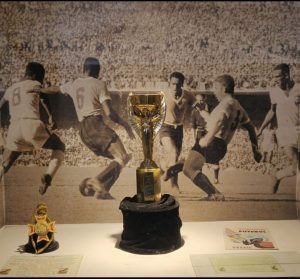If I am being truly honest, Uruguay was never high on my travel-priority list. Having previously visited the continent twice prior to this trip, South America’s 3rd smallest country never once crossed my mind as a place to visit. My knowledge and interest in Uruguay centered solely on their dogged football team who often excelled in the World Cup, and a handful of their players who played for my beloved Liverpool. Perhaps my knowledge of the country for only footballing reasons can be condoned however, given that the country’s nickname is “Le Celeste”, meaning “Sky Blue”, in honor of their football team and its victories in the 1930 and 1950 World Cups.
So when the opportunity presented itself to travel through much of the country, I of course said yes, but without as much excitement or enthuasium as for some other countries on our route.
Our foray into a country 2.5 times the size of Ireland, yet dwarfed by its two giant neighbours Brazil and Argentina, began with a crossing of the Uruguay River at Fray Bentos, on the hugely impressive General San Martin International Bridge. This structure (and others we would later see) was quite different to some of the dated infrastructure we had gotten used to in Argentina. Gone were the unkept or haphazardly built temporary solutions, now replaced by Uruguay’s modern, sleek and dynamic transportation projects.
Before arriving to our first destination, Colonia de Sacramento, our 4 hour drive took us through rural farmlands and small towns. We were amazed at the maintenance, care and pride that the locals took in everything we saw. Roadsides were immaculate, with grass trimmed to perfection and not a piece of litter in sight. Towns were full of national flags and colours everywhere. There wasn’t even a World Cup in sight, yet national pride was abundant to see.
Colonia de Sacramento is a colonial coastal city, famous for it’s trategic importance in resisting unwanted foreign visitors in centuries gone by. We stayed a little outside the city the evening we arrived, overlooking the mouth of the River Plate. Morning brought glorious sunshine and the sight of a beautiful little beach. Kids and adults didn’t hesitate in decamping for the morning to enjoy a little slice of Uruguayan heaven (Colonia de Sacramento itself would have to wait). Sand castles, tunnels and sand cities were built, long jump competitions were held, and of course the beautiful river was visited. It should be noted that the river mouth measured about 220km in diameter at it’s widest point, thus making it the widest river in the world. For all intents and purposes that morning, it certainly resembled the sea to us anyway.
Having spent a few lovely days in the small city, we made our way along the coast and east to the capital city of Montevideo. Containing roughly half of the country’s 3.5 million population, it really is true to say that all roads lead to Montevideo in Uruguay. As the southernmost capital city in the Americas, Montevideo has pleasant weather year-round, and it is ranked first for quality of life in Latin America.
We could vouche for this award as entering Montevideo brought less of the usual tension, stress and general discomfort that entering a big city with a big motorhome brings. This is because the city is extremely inviting visually (it is flanked by the Atlantic and many beautiful golden beaches throughout) and the people are truly welcoming. We parked close to the “Costanera” or “Coast Road” and were happy to sleep there also for a few nights.
We spent a few very enjoyable afternoons strolling the historic streets of the “Mercado del Puerto” or Port Market area. Lazy lunches were enjoyed in the ideal local summertime warmth and national team football jerseys were bought as the kids added to their ever-growing South American collection. We also strolled alongside the many parks and recreational areas along the coast, where a sportsmad population seemed to spend all their free time.
We even managed a trip to the Estadio Monumental in the city, the scene of the first ever football FIFA World Cup final. Aside from viewing the very impressive nearly 100 year old living relic, we also visited the football museum on-site. A hugely thorough collection of memorabilia, photos and stories were on view for us. We lived the jubilation of the hosts 4-2 win over neighbours Argentina in that first ever final, plus their shock victory in Brazil 20 years later in front of a (still) world-record attendance of 199 thousand people.
Click here to read the “Uruguay – A Very Pleasant Surprise (Part 2 of 2)” blog post








Leave a Reply